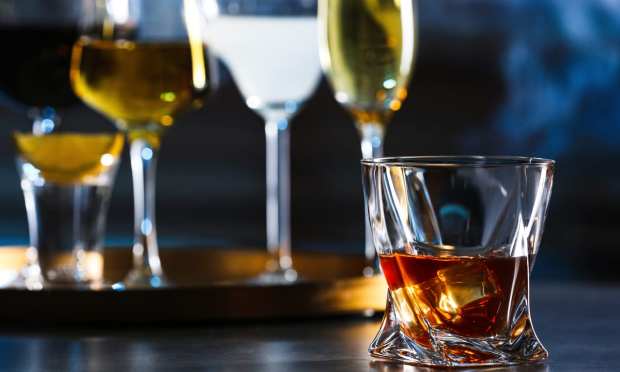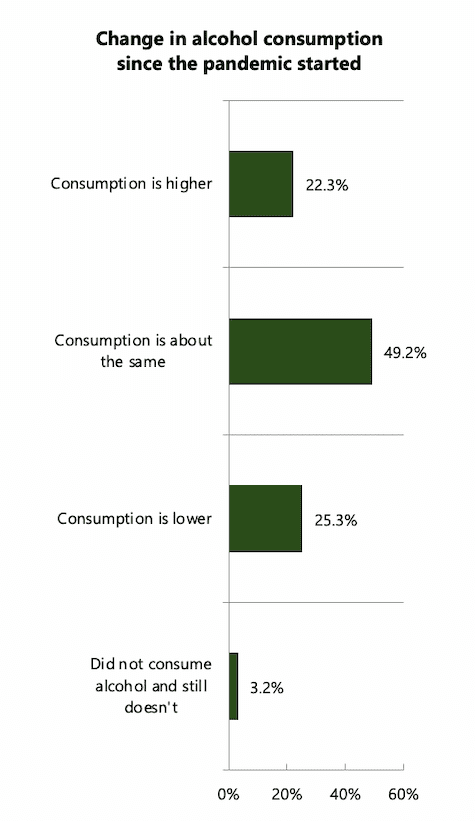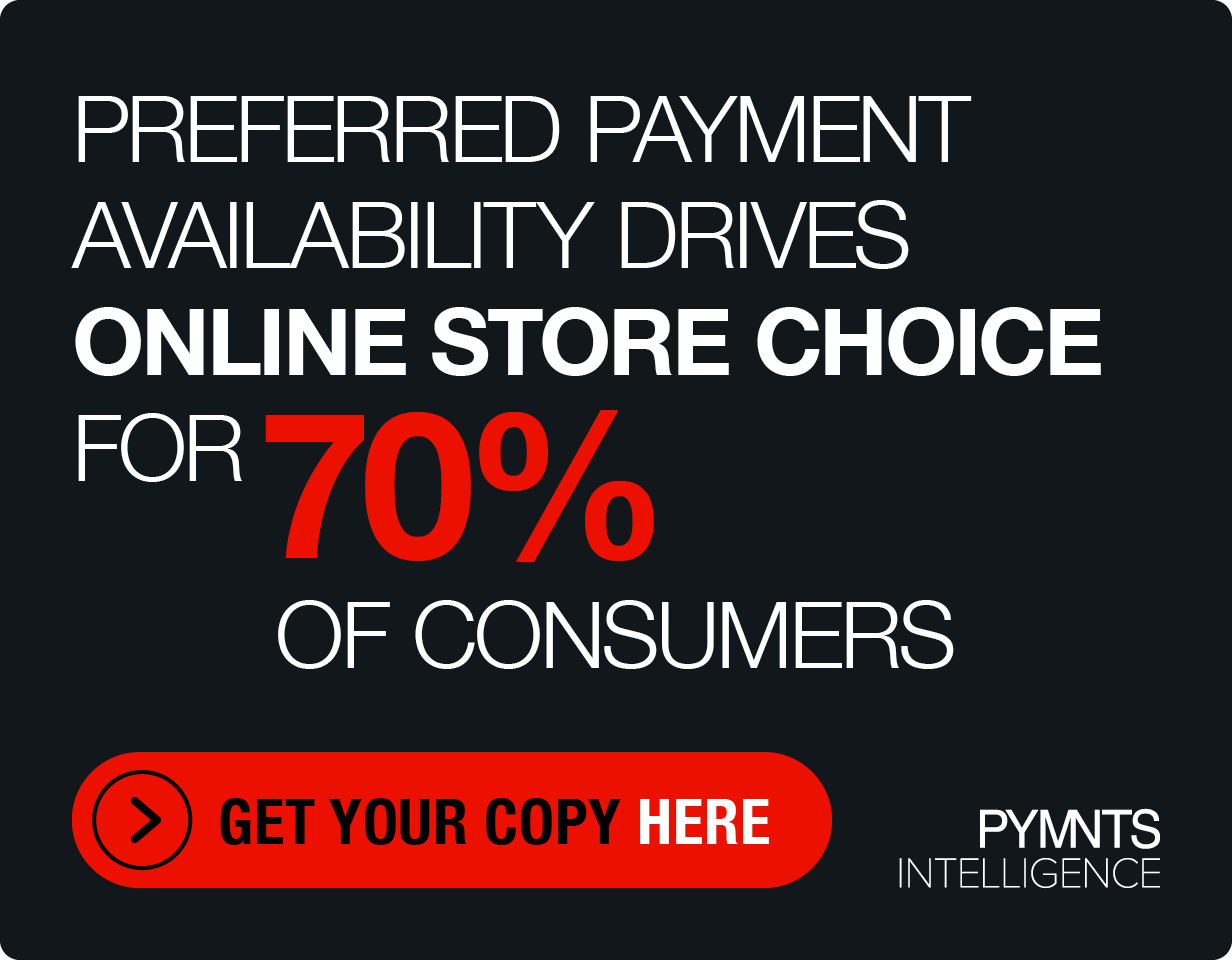Alcohol Habits Change Since The Start Of The Pandemic

The past 13 months have transformed many consumers’ habits, as the daily routines that had become so ingrained were shaken up by lockdown restrictions and contagion concerns. Consumption behaviors and commerce channels shifted as consumers settled into their pandemic lifestyles. Conventional wisdom has it that, in this time, most people were drinking more alcohol, turning to wine, beer, and liquor to cope with the stress of the virus outbreak. In fact, PYMNTS data suggest that this may not be the case at all.

According to our survey of 1,994 U.S. adults, more people have actually decreased their alcohol consumption than increased their consumption — 25 percent of consumers are drinking less, compared to only 22 percent who are drinking more. Of course, this is not to say that fewer drinks are being consumed overall — reports that liquor sales have been up may indicate that the “consumption is higher” group may be adding more drinks per week than the “consumption is less” group is cutting out. (For example, if two people have cut out three drinks per week, and one person has added 10, more alcohol overall would still be consumed.) Meanwhile, the fact that one in four consumers has been cutting back on alcohol may give a little more insight into the rising popularity of mocktails and other premium, non-alcoholic drinks.
Generation Xers and consumers in large metropolitan areas have been the most likely to increase the amount of alcohol they are consuming during the pandemic — 31 percent of Gen Xers and 30 percent of those in large metropolitan areas have been drinking more. Meanwhile, bridge millennials and older adults (baby boomers and seniors) have been the most likely to cut back — 31 percent of the former and 32 percent of the latter have been drinking less these past 13 months.

Unsurprisingly, consumers are not buying as much alcohol on-site at establishments such as bars, restaurants, and event venues — 41 percent of consumers report buying less alcohol at these places since the start of the pandemic, and only 16 percent report buying more. Meanwhile, almost half of all consumers have been purchasing alcohol online more since the pandemic began, both buying in advance for delivery at a later date and buying for same-day delivery. Buying at liquor stores and grocery stores has held more or less constant, with the majority of consumers reporting that they buy in stores just about the same amount as they did before March 2020.

The habit changes made over these last 13 months are going to be fairly sticky — whether they are buying more or less, and wherever they have shifted their buying to, the majority of consumers report that they expect to maintain some or all of the changes that they have made even once contagion concerns subside and they can return to activities they enjoyed before the pandemic.
Those who have decreased their consumption are the most likely to maintain all of the changes they have made, with about 4 in 10 consumers who are buying less alcohol in stores and online reporting that they expect these habits to completely carry over into their post-pandemic lifestyles. Meanwhile, online liquor stores are also likely to continue to see a boost in sales post-pandemic, as 70 to 80 percent of consumers who have adopted these channels more during the virus outbreak intend to maintain some or all of their buying behaviors even as bars and restaurants become a relatively safe option once again.

